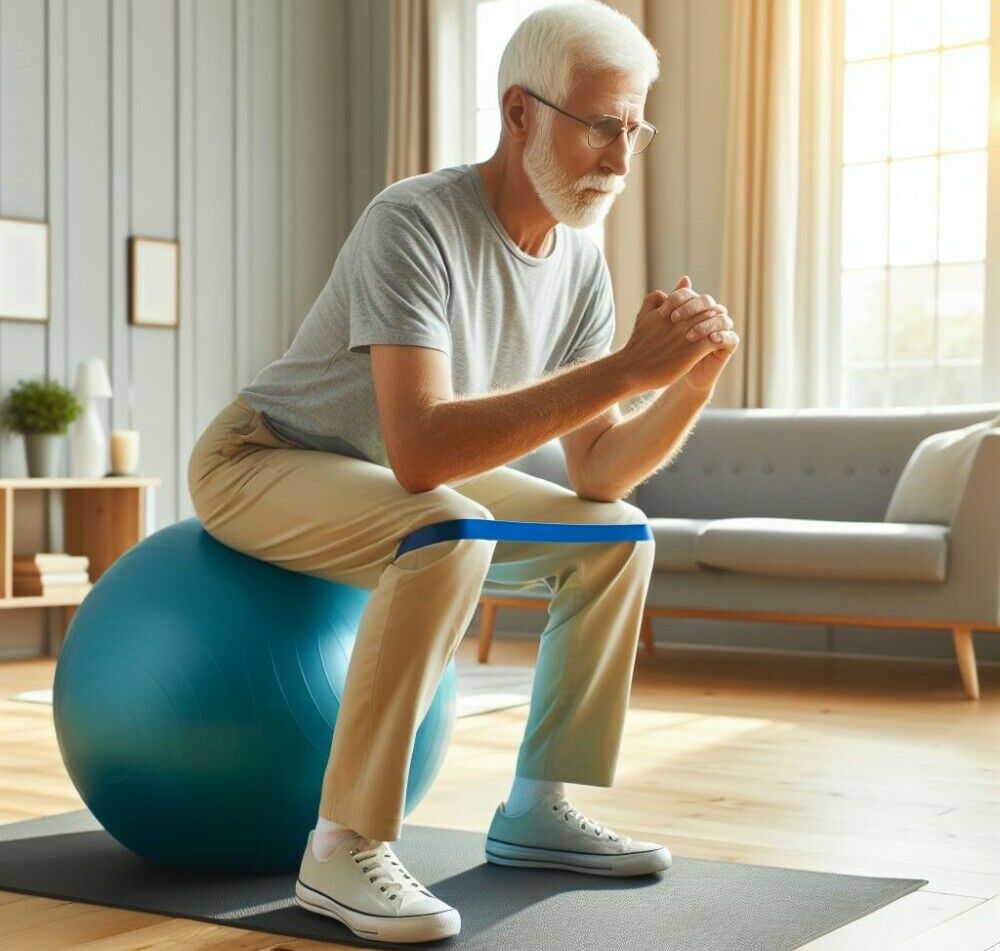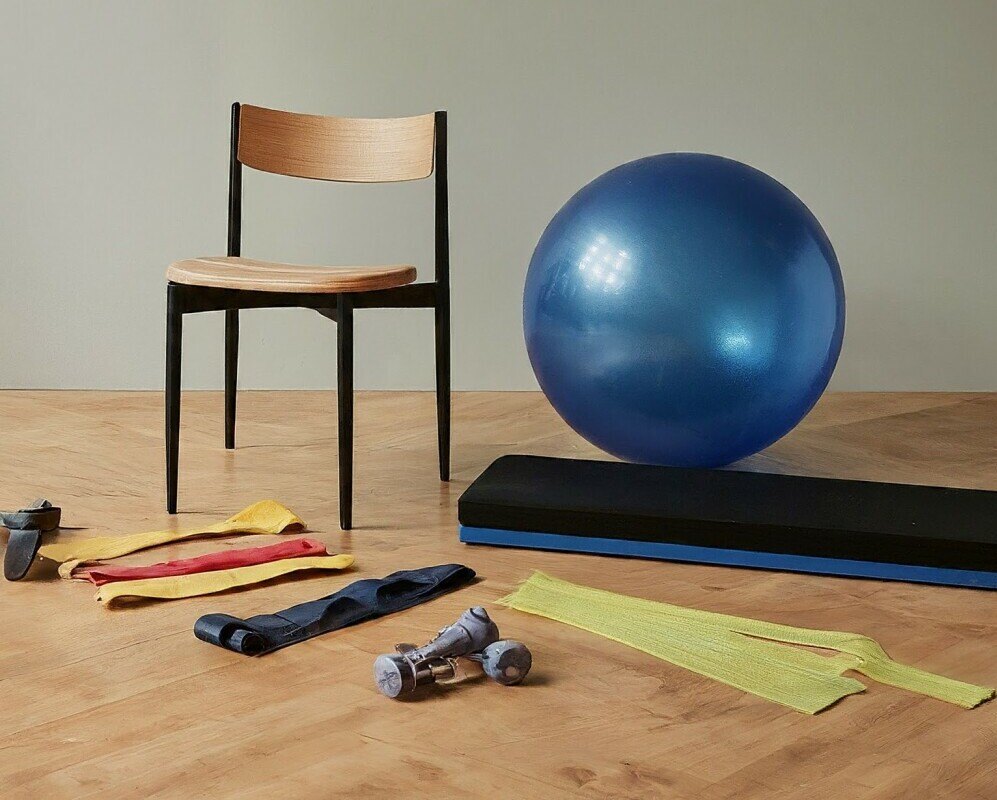As we age, maintaining good balance becomes increasingly important for preventing falls and staying independent.
The good news?
Fun and effective balance exercises can significantly improve your stability, and using equipment adds a little challenge to keep things interesting!
This article explores various equipment-based balance exercises suitable for seniors, along with their benefits and how to perform them safely.

Benefits of Balance Exercises for Seniors
- Fall Prevention: Improved balance reduces the risk of slips and falls, a major concern for seniors.
- Enhanced Mobility: Better balance allows for easier navigation of daily activities, increasing confidence and independence.
- Stronger Core: Many balance exercises engage the core muscles, leading to better overall posture and stability.
- Improved Coordination: Balance exercises often involve coordinated movements of the upper and lower body, enhancing overall coordination.
- Boosted Confidence: Successfully completing balance exercises fosters a sense of accomplishment and self-confidence.
“A study published in PLOS One by Howe et al. (2017) reviewed multiple studies and found that balance and strength training can significantly improve physical function in older adults.” See reference below this article to read more.
Equipment You Can Use

- Chair: A sturdy chair is a versatile tool for many seated balance exercises.
- Resistance bands: These lightweight bands add a bit of resistance to exercises, making them more challenging.
- Foam pad: A wobble cushion or balance pad creates an unstable surface, forcing your core to engage for better balance.
- Fitball (stability ball): This large inflatable ball provides a dynamic surface for various exercises.
- Weights (light dumbbells or ankle weights): Adding light weights increases the difficulty and works different muscle groups.
Fun and Effective Balance Exercises
1. Single-Leg Stance with Chair (Beginner):
- Stand beside a sturdy chair with one hand lightly holding the back for support.
- Slowly lift your other leg off the ground, keeping your hips level and core engaged.
- Hold for as long as comfortable, then switch legs and repeat.
2. Marching in Place with Resistance Band (Beginner):
- Loop a resistance band around your ankles.
- March in place, focusing on lifting your knees high and keeping your core tight.
- The band adds slight resistance, challenging your balance.
3. Heel-Toe Walk on Foam Pad (Intermediate):
- Place a foam pad on the floor.
- Slowly walk heel-to-toe across the pad, maintaining good posture and core engagement.
- The unstable surface will improve your balance control.
4. Wall Squats with Fitball (Intermediate):
- Place a fitball between your lower back and a wall.
- Perform squats, ensuring your knees track over your toes and core remains engaged.
- The fitball provides support while challenging your balance.
5. Side Leg Lifts with Light Weights (Advanced):
- Stand holding light dumbbells in each hand or use resistant band.
- Slowly lift one leg out to the side, keeping it straight and core engaged.
- Lower the leg and repeat on the other side.
- The weights add an extra challenge to improve balance and core strength.
Key Takeaways:
- Start slow and gradually increase the difficulty as you improve.
- Focus on proper form and core engagement throughout the exercises.
- Listen to your body and take breaks when needed.
- Consult your doctor before starting any new exercise program.
FAQs
- How often should I perform balance exercises? Aim for 2-3 sessions per week, with each session lasting 15-20 minutes.
- Can I do these exercises if I have balance problems? Yes, but it’s important to begin with beginner exercises and modify them as needed. Consider using a wall or chair for additional support.
- What if I don’t have any equipment? Many exercises can be done without equipment. Try standing on one leg, heel-toe walking, or tai chi exercises.
Additional Tips for Fall Prevention
Falls are a major concern for seniors and cite this research to emphasize the importance of balance exercises,
“Falls are a leading cause of injury among seniors. Research by Sherrington et al. (2017) highlights the effectiveness of balance exercises in fall prevention programs for older adults living independently.” See reference below .
Their research suggests that incorporating balance exercises into fall prevention programs for older adults living independently can significantly reduce the risk of falls and related injuries.
Conclusion:
Maintaining good balance is essential for seniors to remain active, independent, and confident.
By incorporating these fun and effective balance exercises with equipment into your routine, you can significantly improve your stability and reduce the risk of falls.
Remember, consistency is key! Start slowly, gradually increase the difficulty as you progress, and listen to your body.
Most importantly, have fun while challenging yourself!
Looking for more tips on senior fitness? Explore our website for additional articles on strength training, flexibility exercises, and healthy lifestyle habits for older adults.
References
Howe, T. E., Robertson, D. I., Devine, A. H., Dykes, E. A., & Sanford, C. S. (2017). Effects of balance and strength training on physical function in older adults: A systematic review and meta-analysis. PLoS One, 12(5), e0176100. https://pubmed.ncbi.nlm.nih.gov/26325622/
Sherrington, C., Zhuaykov, V., & Prakash, S. (2017). Fall prevention and balance exercises for older people living in the community. Cochrane Database of Systematic Reviews, (11). https://www.cochrane.org/CD012424/MUSKINJ_exercise-preventing-falls-older-people-living-community
